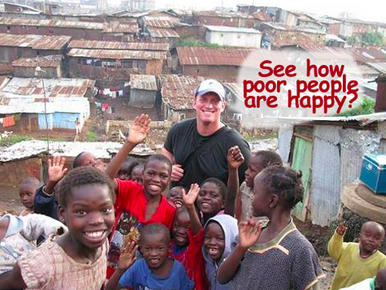And he appointed twelve (whom he also named apostles) so that they might be with him and he might send them out to preach and have authority to cast out demons (Mark 3:14-15).
 “You need to be more practical.” These are the dreaded words no preacher or Bible teacher wants to hear, particularly if he or she wants to be considered effective and well-liked in modern, contemporary church circles. I am among the unfortunate who have been admonished and, even, scolded with these words more often than I’d like to admit. Yet, I am not ready to yield to the tyranny of the practical. As modern Christians, particularly evangelicals, we often measure biblical information (teaching, preaching, sermons, commentary, Bible studies, etc.) by its immediate practical value. The up-side—Christians want to be obedient to Scripture. This is a good thing. The down-side—a preoccupation with the “practical” can too often dissuade us from thinking deeply about the significance of a text, the kind of reflection needed for developing well-thought through application, which ought to be based on an appropriate and authoritative reading (i.e., an exegesis) of the text. The path to application can be too quickly made and too frequently unconnected to the original intention of the biblical author. Wasted Evangelism is not intended to be “practical.” However, I have worked hard throughout the last five chapters to uncover the meaning of the Markan texts under consideration, ending each study with the significance of these texts for church communities, for church leaders, and for those who call themselves Christian. Each chapter unfolded more fully the nature and content of the gospel we are to believe (Mark 1:1, 14–15), seeking to answer the question, How should my faith, our church, our discipleship, our evangelism be informed and formed by the narrative of Mark’s Gospel? I mentioned early in this book that chapters 1 through 5 were originally papers presented at meetings of the Evangelical Theological Society between 2006 and 2012.[1] At the conclusion of my paper on the Mark 1:17 “fishers of men” text (chapter 3 in this volume), I made this assertion: The fisher metaphor is appropriate, not just narrowly for individual, private salvation, but more broadly for applications, activities, and outcomes of social action and justice, as well. I offered this deduction based on the antecedent OT meaning of the fisher concept and on my conclusion that the Mark 3 commission (vv. 13–15)[2] was the inaugural fulfillment of the Mark 1:17 promise that Jesus would create his followers to become fishers of men. After I finished presenting the paper, during the Q&A, a very nice gentleman (a pastor I believe) asked a reasonable follow-up question: “Does that mean ‘casting out demons’ is social action?” Without hesitation I responded, “Yes, it does.” As a result of my overly confident off-the-cuff response, I began crafting a longer answer. This chapter, in part, is that longer answer: In light of the promise to be created fishers, what is the significance of the Mark 3 commission for Christians and church communities on this side of the text? This final chapter is a far cry from any “how to” regarding specific, practical application. Although there is a measure of exegetical investigation regarding the Mark 3 commission, this chapter, more so, offers a model for deciphering the significance of the text. Here, I will focus on the process for developing application that reflects obedience to the text and a legitimate range of potential outcomes, which I posit can be related to social action that addresses the issues of poverty that surround local congregations. This will be as practical as I get! The Gospel, Deep Enough to Include God’s Concern for the PoorThe previous five chapters have been a series of in-depth exegetical arguments, demonstrating that Mark’s programmatic content links the gospel and evangelism to social action.[3] Thus, social action falls legitimately within the realm of evangelism. I have endeavored to show that a narrow, proclamation-centered definition of evangelism based exclusively on word-studies and isolated proof-texts does not match the narrative meaning of the gospel, particularly as Mark presents the gospel of Jesus Christ, the Son of God (1:1). Clearly a mere verbal- and cognitive-based definition of evangelism solely related to the etymology of the word “evangelize” is too narrow and devoid of much of the biblical content that Mark gives his Gospel narrative. As the previous studies have shown, Mark relies on OT backgrounds and contexts (e.g., 1:2–3) to fill the gospel of Jesus Christ (1:1) with defining and programmatic content. Typically, it is accepted that the gospel is defined by incorporating various OT motifs and concepts such as God’s dominion, the Exodus, exile, redemption, and even sacrificial propitiation and forgiveness. The previous chapters have shown that the same OT contexts that Mark harnesses to give programmatic definition to the gospel also clearly contain correspondences and direct references regarding socio-economic relationships and community responsibilities toward the economically vulnerable and the poor.[4] As the five previous studies have demonstrated, social action, therefore, can be evangelism. In chapter 3, “You Will Appear as Fishers,” an examination of Mark 1:17, I concluded that the promise to be created “fishers of men” finds its inaugural fulfillment and premiere “application” in the Mark 3 commission; namely, fishers are those who are with Jesus and who, then, will be sent out to preach and to have authority to cast out the demons. Through the Markan context and antecedent OT background, I showed that the “fisher metaphor is appropriate for applications, activities, and outcomes of social action and justice”([x-ref]).[3] This implies that the Mark 3 commission to preach (v. 14c) and to have authority to cast out the demons (v. 15) can be associated with social action and, thus, can be legitimate obedience to Jesus-Messiah and faithful application of the gospel. Close examinations of Mark’s programmatic understanding of the gospel of Jesus Christ (1:1–3), the fisher-promise (1:17), the Mark 3 sandwich and Beelzebul episode (3:20–35), the Mark 4 parable of the Sower who Sows, and the account of the widow vs. duplicitous scribes in Mark 12 all have shown that the gospel itself is defined broadly and deeply enough to include God’s concern for the poor. Fisher-followers of Jesus, the Messiah-King (1:1, 17), are commissioned to demonstrate the presence of God’s kingdom (3:14–15), which is the gospel of God (1:14–15). As part of the application process (that is, thinking deeply and more thoroughly about application), the following seeks to show that the significance of “preaching” and “casting” (3:14–15) provides a basis for building social action outcomes into a church’s evangelistic activities. [1] This chapter was originally, in part, presented at the annual meeting of the Northeast Region of the Evangelical Theological Society, which met at the Alliance Theological School, Nyack, NY, April 2013. [2] The full text encompasses vv. 13–19, which includes the list of the twelve in vv. 16–19; however this study more specifically will focus on vv. 14–15, the Mark 3 commission component. [2] My working definition for biblical social action: a means to ensure that the blessings and benefits of living in society reach to the poor (see the Introduction for an extended explanation). [3] All the previous studies/chapters in this volume address the wide range of OT texts related to the poor; see chapter 5, “Idolatry and Poverty,” specifically for a list of OT texts and contexts Mark utilizes in his Gospel which refer to the economically vulnerable and issues of justice. [4] See chapter 3, “You will Appear as Fishers” for the full exegetical argument.
1 Comment
The ecclesiastical and liturgical changes that developed at the move from domestic-center church to building-centered church set the Christian community on social mapping trajectories that have affected, not only views on the role of women in the church, but how we also define and understand church growth outputs and outcomes. The distinct change from domestic space with more informal domestic relationship oriented habits and associations to a more formal institutionalized ecclesiastical space has, over two plus millennia, created specific social ramifications for the church and for doing church. And, as well, this has influenced what we consider acceptable church growth texts. We should not underestimate the power of a building as “a church.” As Jeanne Halgren Kilde reminds us, the “material world is far from neutral,” nor is a “church building” any less neutral [Sacred Power, Sacred Space: An Introduction to Christian Architecture and Worship, 199]. Although reflecting on earlier church history, yet still valid to our contemporary building-centered church, Kilde continues, “Christian space is dynamic space. It is powerful space” [199]. The power of sacred space, including a building designated as “a church,” changes everything. Power shifts. Sustainability becomes necessary. Maintaining approved and acceptable hierarchies become absolute. Habits associated with the use of a “sacred” building and the division it makes with everyday life orients our social mapping. A building-centered church experience is not nuetral to the church’s associations and human relationships in and outside the church community (i.e., a local church community). The use of building-centered sacred space as church is a language itself, a specific “god-talk” that that creates a separation from other non-sacred church space, reinforcing a incongruence, a cleavage between everyday life and, also, a barrier between human and human social mapping (or a redefining of social mapping). The shift to now long entrenched habits and meaning associated with building-centered, addressed sacred space made with human hands known as “a church” has provided an interpretive lens for reading the New Testament. The question is not whether we should have specific buildings as centers of “church” activities, but how such building-centered church experiences influence and mold both our interpretation of biblical texts and our understanding of church—and thus, form our parameters for church growth. Interestingly, the Ephesians household code suggests how “members” are understood as persons, and in doing so, there is potential to move beyond mere numbers of people as the only outcome for church growth. *For those following my thoughts on "Church Growth" as I prepare a paper for the upcoming November 2015 annual meeting of the Evangelical Theological Society in Atlanta. This portion comes from the paper entitled, "Domesticating Church Growth (Eph 5:18-6:9): The Spirit-Filled Temple-Church Architecture (Wives-Husbands/Children-Fathers/Slaves-Masters) and Outcomes of Personhood."
Other Not by the Numbers posts >>
While attending an early morning men’s prayer and devotional time (as a guest of the one leading the study component), I was horrified by some of the strained thoughts on the passage. The study leader actually tried to stick to the James text; it was the poor rich readers that made comments to lessen the impact of what God was saying through James' words in chapter 5 of his letter. Here are some of my thoughts as the poor rich readers of the Bible commented on James’ words:
Some might not think it, but I was being charitable here. My thoughts were a bit more harsh and even more direct than what I penned above. I will grant that it took me eighteen years after becoming a Christian to begin to see how suburban, affluent, and political I had been reading the Bible--all the while thinking I was interpreting rightly. We need to stop taking the poor out of the texts that actually call us to judgment for not doing something for the poor--neutrality, distance, time, politics will not be allowed as excuses on that day God judges all of our hearts. For on "that day" our riches will have rotten and our garments will have become moth-eaten. Our gold and our silver will have rusted; and their rust, on that day, will be a witness against us and will consume our flesh like fire.
|
AuthorChip M. Anderson, advocate for biblical social action; pastor of an urban church plant in the Hill neighborhood of New Haven, CT; husband, father, author, former Greek & NT professor; and, 19 years involved with social action. Archives
February 2024
Categories
All
|
Pages |
More Pages |
|


 RSS Feed
RSS Feed